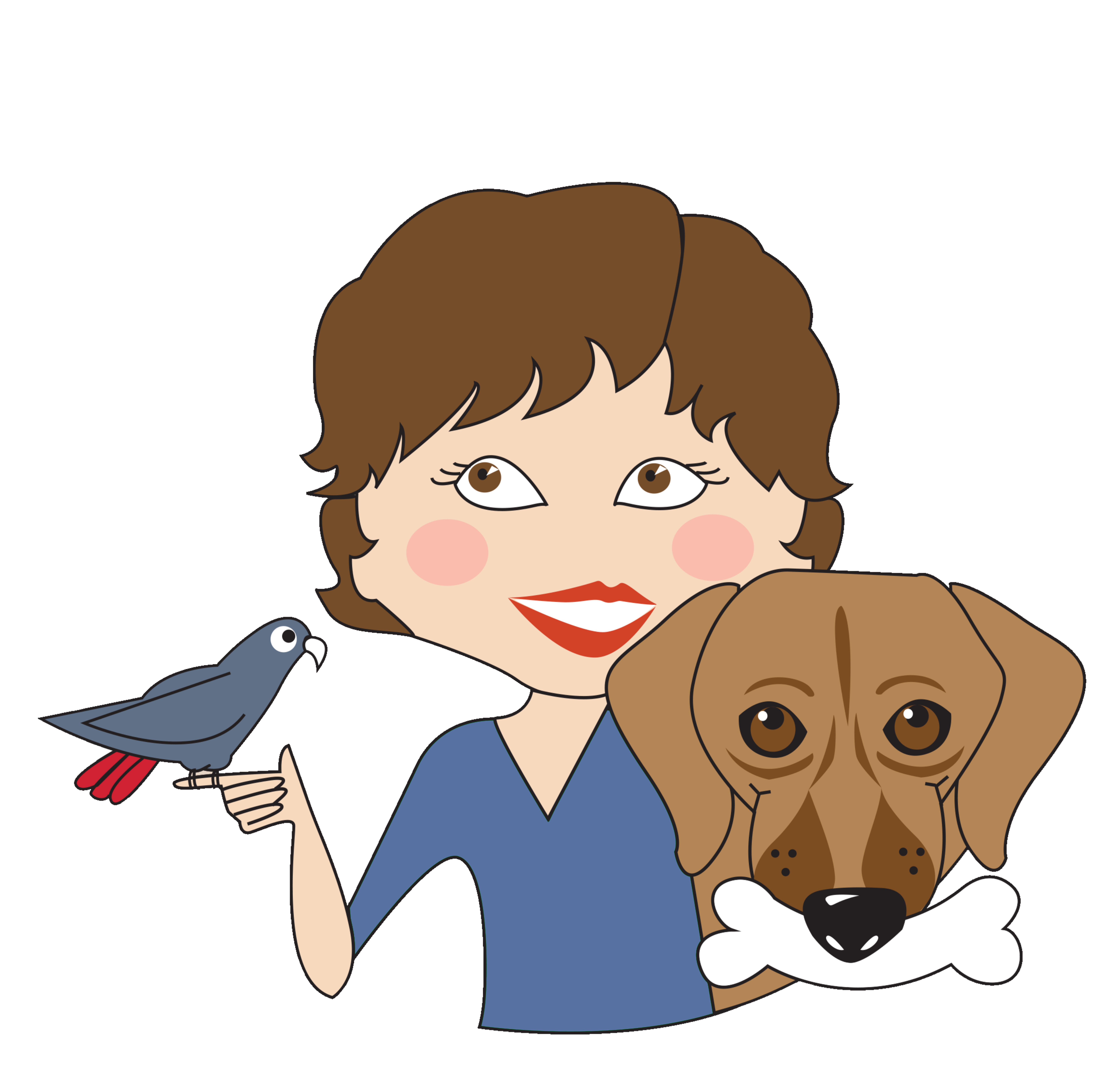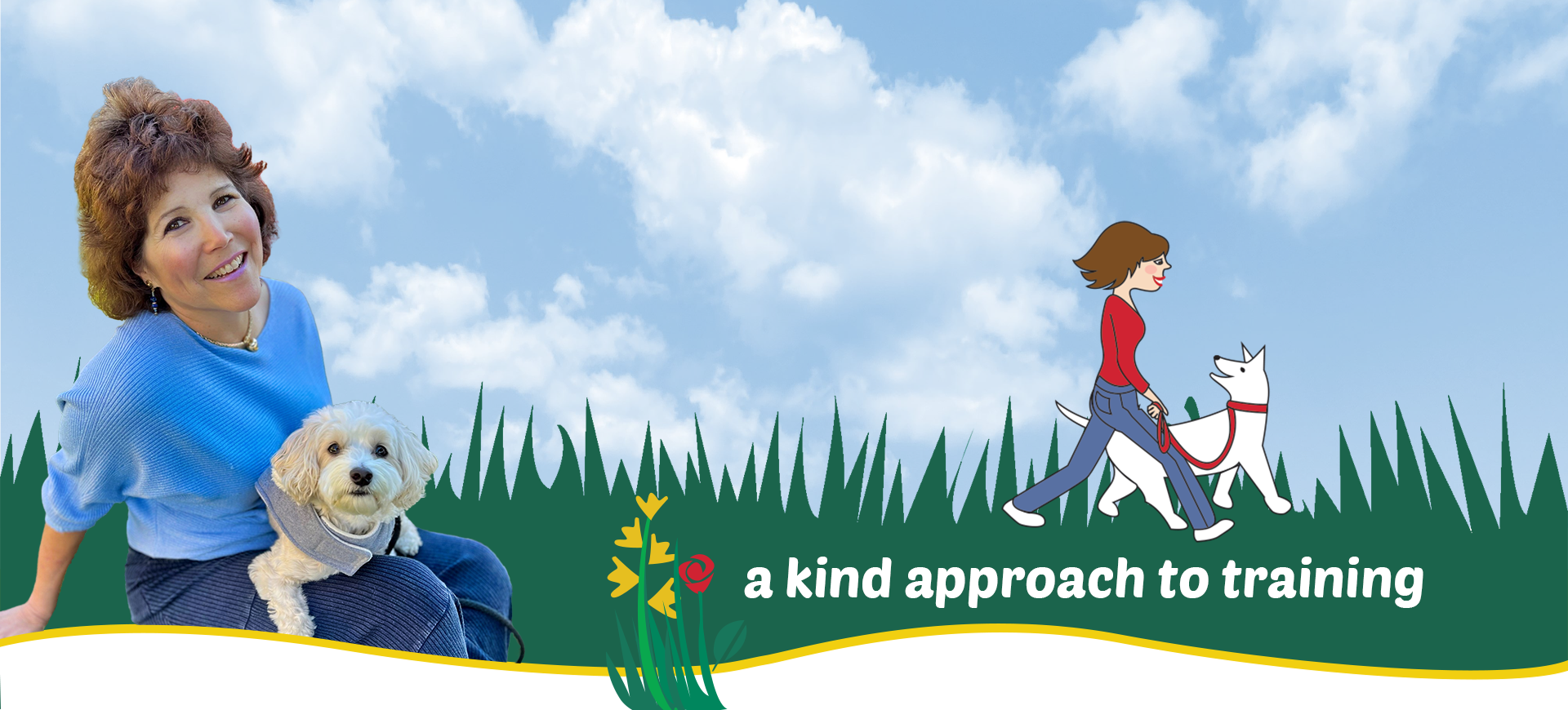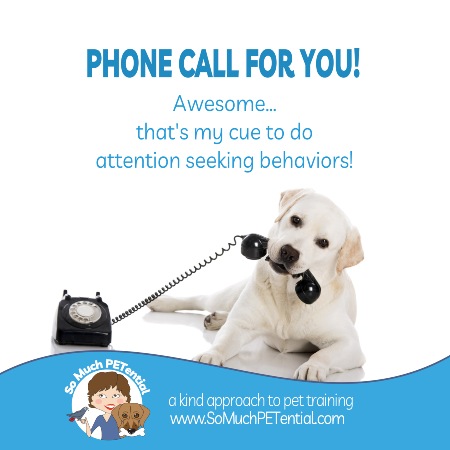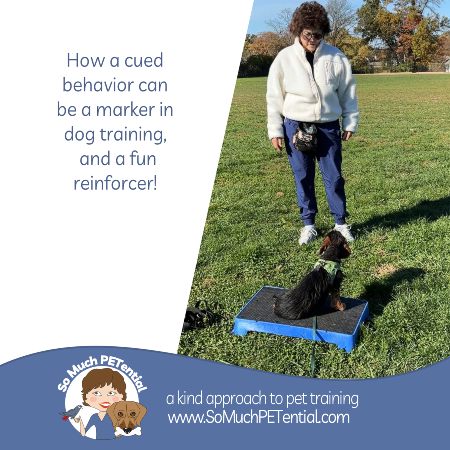I have posted many photos and videos of dogs on or going to a ‘place’. Teaching go to place was an early behavior I taught my dog, Dawson, when he was a puppy. There are a lot of reasons why this dog training lesson is important. There are a lot of reasons why this dog training lesson is an important one. This post will talk about those benefits, as well as offer tips for training it.

What does Go To Place mean to a dog?
Really, place can be anywhere on which you would like your dog to station. Often it is either a mat, dog bed or raised platform but again, that really does not matter so long as it is taught to have value for your pet. It could also mean a certain space like a crate.
That spot also does not need to be called ‘place’. The cue for going to that spot can be anything – even a contextual or environmental cue. In my house, standing at my sink is a contextual cue for my dog to find the mat near my dishwasher. If we are out in the community, just my dropping the mat is a cue for Dawson to lay on it.
When you teach this lesson by teaching your dog that good things happen as a result of being in that spot, often your dog will simply choose to be there even without being cued. For my dog, being on his place (sometimes that can mean mat, other times it can mean a platform, bed or other raised surface), is a place to feel safe, less stressed, relaxed or to begin a game.
Some Benefits Of This Lesson
The PLACE can be an alternative to behaviors you do not want to see.
Settling in a spot is often a much-preferred choice to begging at the dinner table, jumping on guests, counter surfing, chasing kids, approaching other people in social situations like coffee shops.
The PLACE can support your dog in stressful situations.
Having the place can give some predictability to a situation that seems unpredictable and scary for your dog. It can be somewhere safe and comforting to your dog. I definitely see this with my own dog who has been taking anti-anxiety medication since he was young. Bringing his mat with us gave him some security. When he lays on a bed in his vet’s office, his breathing slows.
If your dog is worried about unfamiliar guests in your home, the PLACE (this could be a separate room, a crate in another area or even outside if needed) can lower your dog’s stress. Please note this is different for every dog and situation. Seeking the help of a qualified trainer such as myself can be beneficial.
The PLACE can create safer situations.
Rather than your dog potentially tripping you, knocking people over or getting caught up in child play, settling in a place is a safer alternative for everyone.
The PLACE is a powerful tool for teaching the ability to wait.
When your dog knows, the opportunity to tug, chase a ball or search for food comes from staying on a place first, there is huge motivation for your dog to stay on the place. Also, think about how much more powerful and fun that training is for your dog because it is tied to doing your dog’s favorite behaviors!
Mental exercise is an awesome kind of exercise!
How To Your Dog Go To PLACE
For the sake of this post, I will explain using either a mat or bed.
There are many ways to teach this. Typically, I either train this behavior using shaping (teaching small approximations to the final behavior – think of the hot and cold game we played as children) or
using a prompt to get the dog to move onto the mat.
When I am training or teaching a pet guardian to train, this lesson may vary widely depending on the information the dog is communicating. Below are some very general steps to modify as needed.
First step – if your dog knows how to hand target, you can have your dog follow your hand to move onto the bed. Once your dog is there, you can click or say YES or GOOD (markers), and then toss 3 to 5 treats onto the bed, one at a time.
Tell your dog, GET IT (or another cue), and put a treat on the ground just enough for your dog to get off the bed. (NOTE: if you have not already taught your dog that GET IT means go eat the treat that was tossed on the ground, it can be helpful to teach this before incorporating it into the place game.)
As soon as your dog eats the treat, use your hand prompt to have your dog follow it on the bed. Mark that and toss 3 treats onto the bed (one at a time) before sending your dog off to get a treat.
Repeat this 10 times.
The next time, warm your dog up with a couple of these repetitions. Then, after your dog gets the treat from the ground, wait to see if your dog moves toward the bed (even better if your dog gets on the bed). Mark that and toss 3 treats on the bed.
Repeat this 10 times.
The next time, warm up your dog. When your dog is fluidly going to the bed, to deliver the treat, lure your dog into a laying down position, Mark this and give your dog 3 treats between his paws. Send your dog off and repeat this 10 times.
When this is very fluid, meaning your dog get the treat on the floor and comes back to the bed to lay down, then go ahead and name the behavior with whatever cue you would like to use.
Practice this sometimes adding the cue just before your dog moves to the bed and sometimes without the verbal cue.
Below is a recent video of a dog training lesson with Phoebe, an adolescent goldendoodle.
Prior to the video, Pheobe’s guardian had already begun building value for the bed. Phoebe would go to her bed to relax with a toy but had not known a cue for this behavior. This shows a snippet of how we worked on it.
